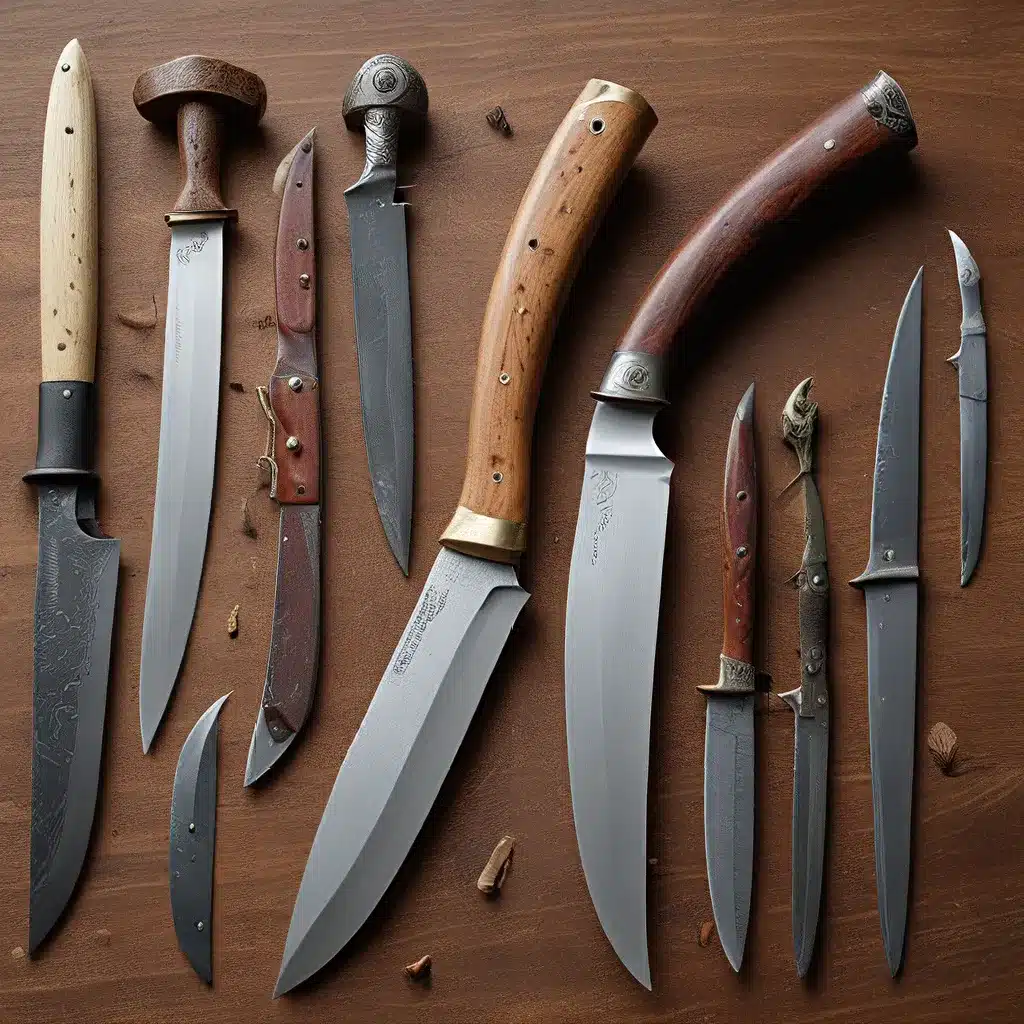
The Origins of Knives: A Tale of Survival and Utility
In the vast expanse of human history, the humble knife has been a constant companion, evolving alongside our species as a tool of necessity, ingenuity, and even artistic expression. Let’s delve into the captivating journey of how these cutting implements have shaped our world, from the dawn of civilization to the cutting-edge innovations of today.
The earliest folding knives were crafted from materials like flint, bone, and obsidian, serving as vital instruments for hunting, fishing, and preparing food. These primitive tools were not merely functional; they were a reflection of our ancestors’ resilience and adaptability in the face of a rugged, unforgiving world.
As civilizations progressed, the role of knives expanded beyond mere survival. In ancient Rome, these versatile blades were wielded by soldiers as weapons, while craftsmen and artisans employed them for carving, shaping, and refining materials like wood and stone. The folding knife had become a valuable tool that could be easily carried and used for a multitude of tasks.
The Blade’s Evolution: From Craftsmanship to Innovation
During the Middle Ages, the folding knife evolved into a tool of the trade for skilled craftsmen, including blacksmiths, carpenters, and leatherworkers. These knives were often adorned with intricate designs, their handles crafted from materials like ivory and bone, reflecting the artistry and pride of their makers.
The 19th century saw the folding knife’s rise in popularity among civilians, not just tradesmen. The iconic Swiss Army Knife, first introduced in 1891, became a staple for soldiers and adventurers around the world, showcasing the versatility of these multifunctional tools.
The 20th century ushered in a revolution in the folding knife industry, with the introduction of new materials and manufacturing techniques. The development of stainless steel in the early 1900s made knives more durable and resistant to rust and corrosion, while advancements in CNC machining and laser cutting allowed for more precise and intricate designs.
The Modern Folding Knife: Functionality and Aesthetics
Today, the folding knife industry is thriving, offering a diverse range of sizes, shapes, and styles to suit a variety of needs and preferences. From tactical knives for military and law enforcement use to elegant, collector-worthy designs, the modern folding knife has become a reflection of both functionality and personal style.
One such example is the Real Steel Knives company, founded in 2013 in the heart of Hangzhou, China. Dedicated to producing high-quality knives at affordable prices, Real Steel has quickly gained a reputation for innovative designs and the use of advanced materials.
The Luna Lite model, for instance, features a sleek, modern design with a two-stage slip joint mechanism for added security, as well as G10 handles and a D2 steel blade. Another innovative offering from Real Steel is the S5 Metamorph, which boasts a unique flipper mechanism for easy one-handed opening and a S35VN steel blade known for its durability and edge retention.
As the folding knife industry continues to evolve, we’re likely to see even more exciting developments. New materials like FatCarbon and Titan Damascus are being explored, while 3D printing is opening up the possibility of customized designs and prototypes. The future may even bring us folding knives with integrated technology, such as GPS tracking or biometric sensors.
Choosing the Right Folding Knife: Considerations and Advice
With so many options available, selecting the perfect folding knife can be a daunting task. When making your choice, it’s essential to consider your intended use for the knife, as well as your budget and personal style preferences.
Look for knives with high-quality materials and construction, such as stainless steel blades and durable handles. Pay attention to the size and weight of the knife, as well as any additional features like assisted opening or locking mechanisms.
It’s also worth exploring the rich history and evolution of folding knives, as understanding their origins and development can greatly inform your decision. From the ancient flint and bone tools to the modern marvels of engineering, the folding knife has been a constant companion throughout the ages, adapting to the changing needs and preferences of its users.
The Enduring Appeal of the Folding Knife
The folding knife’s versatility and durability have made it a staple for craftsmen, adventurers, and collectors alike. As technology continues to advance, the possibilities for these cutting implements are truly endless. With new materials, manufacturing techniques, and even integrated technology, the future of the folding knife is bright.
Whether you’re a seasoned knife enthusiast or simply appreciate the rich history and craftsmanship behind these tools, the enduring appeal of the folding knife is undeniable. So, sharpen your senses, explore the vast array of options, and discover the perfect blade to suit your needs and style. The journey of the folding knife is far from over, and the stories it has yet to tell are sure to captivate us for generations to come.


